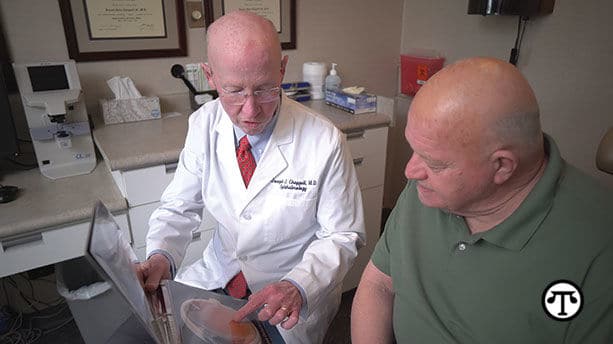By Raga Justin, The Texas Tribune May 20, 2020
“Texas doctors say their revenue has dropped by at least 50% since the pandemic, survey data shows” was first published by The Texas Tribune, a nonprofit, nonpartisan media organization that informs Texans — and engages with them — about public policy, politics, government and statewide issues.
As both a health care worker and a small-business owner, the coronavirus pandemic hit Austin pediatrician Ari Brown especially hard.
“The public perception of health care right now is: You guys are inundated, and it’s like being in ‘Grey’s Anatomy,’” Brown said. While that was true for hospital and emergency room doctors, she said, for independent medical practices, “there was this abrupt halt in business as usual.” Even with a swift rollout of telemedicine, her patient volume dropped by at least 50% for two months.
To cope with the resulting cash crunch, Brown reduced her employees’ hours, began calling patients to remind them of mandatory vaccinations and met families in the parking lot for check-ups. She hasn’t taken a paycheck since March 15.
An unlikely casualty of the coronavirus pandemic, independent medical practices are experiencing severe financial strain, according to a Texas Medical Association survey of physicians released Wednesday. The survey analyzed responses from 1,548 Texas physicians and found that 68% of practicing physicians have had to cut work hours, while 62% have had their salaries reduced.
Medical practices have been struggling since the onset of the pandemic, even as COVID-19 strained hospital resources. Gov. Greg Abbott’s executive order in late March banned elective surgeries, ordering health care facilities and professionals to postpone all procedures that were deemed “not medically necessary.”
As a result, the patient visits and elective surgeries that primarily drive revenue dropped precipitously and left clinics reeling. The majority of TMA-surveyed physicians reported stunning blows to income, with 63% of physicians reporting that their revenue decreased by half or more. Abbott lifted the ban on elective procedures April 22, but many patients were still hesitant to return.
Brown said she was lucky enough to take early advantage of federal loans from the Paycheck Protection Program and the Economic Injury Disaster Loan. But not all physicians were so lucky.
From March 1 to May 2, more than 160,000 people in the health care and social assistance industry filed unemployment claims, a statewide Tribune analysis shows. That represents 11.1% of all unemployment claims during the past two months. A $334 million lifeline proposed by the Texas Health and Human Services Commission, which would have increased Medicaid payments to health providers, is still in limbo.
Meanwhile, advocates say the model of the health care system is to blame and are calling for a revamp. Tom Banning, the chief executive officer of the Texas Academy of Family Physicians, said telemedicine visits were often not equally reimbursed by health insurers, forcing doctors to work harder for less pay.
“There is no question that our entire system has entirely devalued primary care, and now we’re paying the consequences,” Banning said. “The state has levers they can pull to begin thinking differently about how we deliver health care here.”
In an early April statement signed by Banning and other advocates, health care advocacy organization The Health Rosetta blasted the “unremitting stupidity” of the current “fee-for-service” reimbursement system many clinics operate under. The vast majority of health insurance companies pay only for individual visits and tests rather than per patient.
“Without patients, primary care practices are like the airlines operating ghost flights,” the statement reads. “These practices need an immediate infusion of funding to implement a community-wide pandemic response. This would replace the severely flawed, fee-for-service model that has made our country more vulnerable to the pandemic.”
Brown, for her part, is optimistic that her business and other medical practices will begin to see an uptick in patient visits soon.
“I feel confident that things are heading in the right direction,” Brown said. “If someone feels comfortable going to a bar now, they can show up and get their wellness check.”
Anna Novak contributed to this report.
Disclosure: The Texas Tribune, as a nonprofit local newsroom and a small business, applied for and received a loan through the Paycheck Protection Program in the amount of $800,000.
The Texas Medical Association has been a financial supporter of The Texas Tribune, a nonprofit, nonpartisan news organization that is funded in part by donations from members, foundations and corporate sponsors. Financial supporters play no role in the Tribune’s journalism. Find a complete list of them here.






